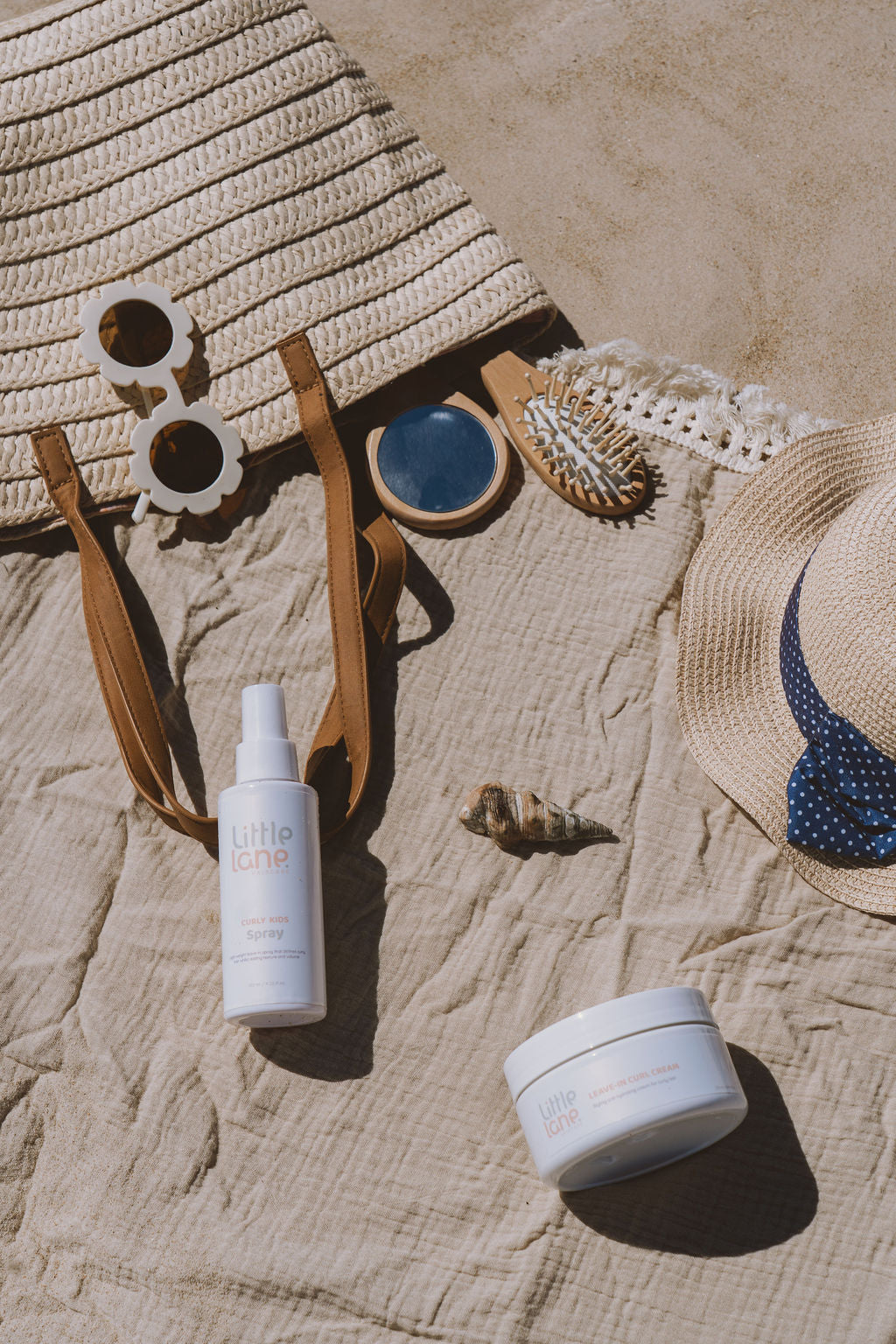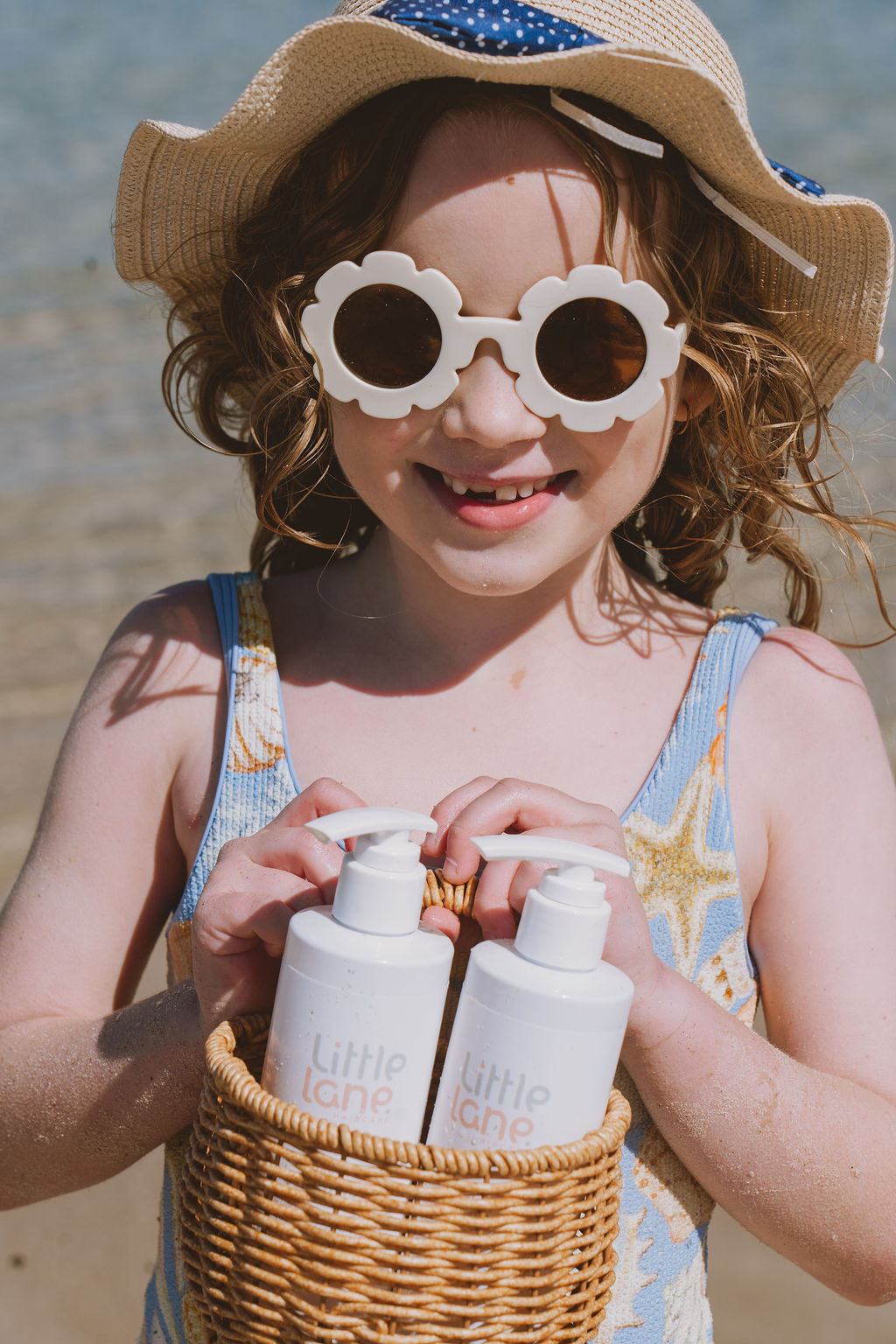School holidays mean one thing for most Australian families - lots of time in the water. Whether it's daily trips to the local pool or beach days that stretch from morning to sunset, our kids are living their best summer lives.
But while we're diligent about sunscreen and hydration, hair care often gets overlooked until we're faced with dry, tangled, discoloured mess at the end of the holidays.

The Hidden Damage in Pool Water
Chlorine is essential for keeping pools safe, but it's harsh on children's delicate hair. It strips away natural oils, leaving hair dry and brittle. For blonde or light-coloured hair, chlorine can cause that tell-tale green tinge that's notoriously difficult to remove.
The damage doesn't happen all at once - it's cumulative. Each swim without proper rinsing adds another layer of chemical buildup.
Salt Water: Friend or Foe?
Salt water has a different effect. While it can enhance curl definition and add texture (which is why "beach hair" products exist), it's also dehydrating. The salt draws moisture out of the hair shaft, and when combined with sun exposure, can leave hair feeling like straw.
The Simple Solution: Rinse Before You Leave
The most important step happens right after swimming, not later that night. Here's why immediate rinsing matters:
Fresh water removes chemicals while they're still on the surface. The longer chlorine or salt sits on hair, the more damage it causes. A quick rinse under the pool shower or beach tap makes a massive difference.
It prevents chemical reactions. Chlorine continues to oxidise hair even after you've left the pool. Rinsing stops this process.
It makes washing easier later. Hair that's been rinsed is much easier to detangle and wash properly when you get home.
The Proper Post-Swim Routine
Step 1: Rinse immediately Before leaving the pool or beach, thoroughly rinse hair with fresh water. Spend at least a minute making sure you've rinsed all the way through to the scalp.
Step 2: Wash properly at home Use a gentle, sulphate-free shampoo to remove any remaining chlorine or salt. Regular shampoos can be too harsh on already-stressed hair.
Step 3: Condition and detangle Apply conditioner focusing on mid-lengths to ends. Use a wide-tooth comb to gently detangle while the conditioner is still in.
Step 4: Weekly treatment During heavy swimming periods, use a deep conditioning treatment once a week to restore moisture.
What About Multiple Swims Per Day?
If your kids are doing morning and afternoon swims (lucky them!), you don't need to do a full wash each time. Rinse thoroughly after each swim, then do a proper wash at the end of the day.
Prevention Strategies
Wet hair before swimming: This sounds counterintuitive, but hair can only absorb so much water. If it's already saturated with fresh water, it absorbs less chlorinated or salt water.
Consider a swim cap: For children who swim daily, a cap provides extra protection.
Apply leave-in conditioner: A small amount of leave-in conditioner before swimming creates a protective barrier.
Signs Your Child's Hair Needs Extra Help
Watch for:
- Increased tangling
- Dryness or brittleness
- Colour changes (especially green tones)
- Hair that feels rough or straw-like
- Difficulty managing previously easy hair
These are signs that chlorine or salt damage has accumulated and needs addressing with more intensive treatment.
The Bottom Line
School holidays should be about fun, not hair damage. The simple act of rinsing immediately after swimming can prevent most chlorine and salt damage, keeping your child's hair healthy throughout the holidays and beyond.
Make it part of the swim routine - just like towelling off, rinsing should be automatic before you pack up and head home.




